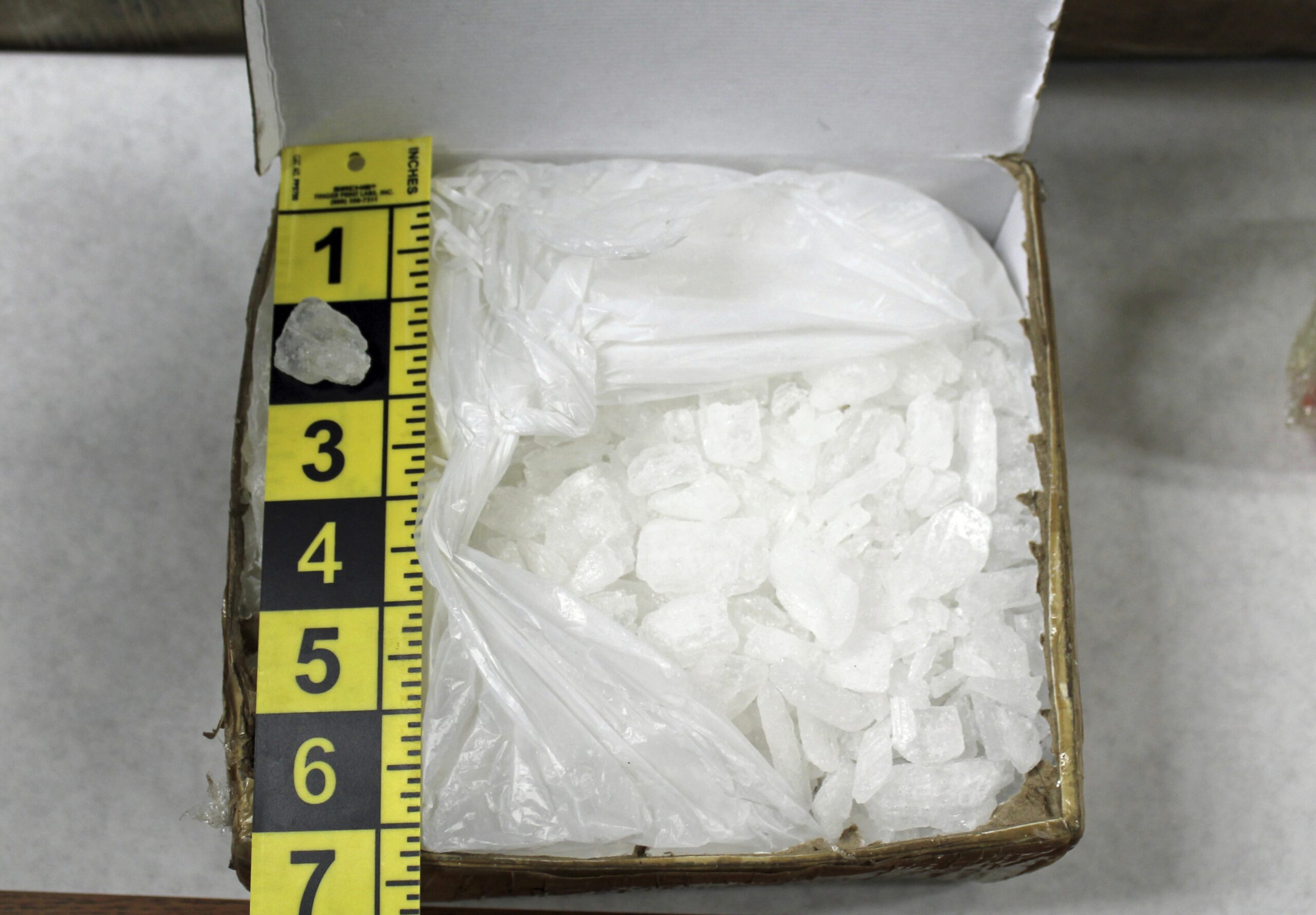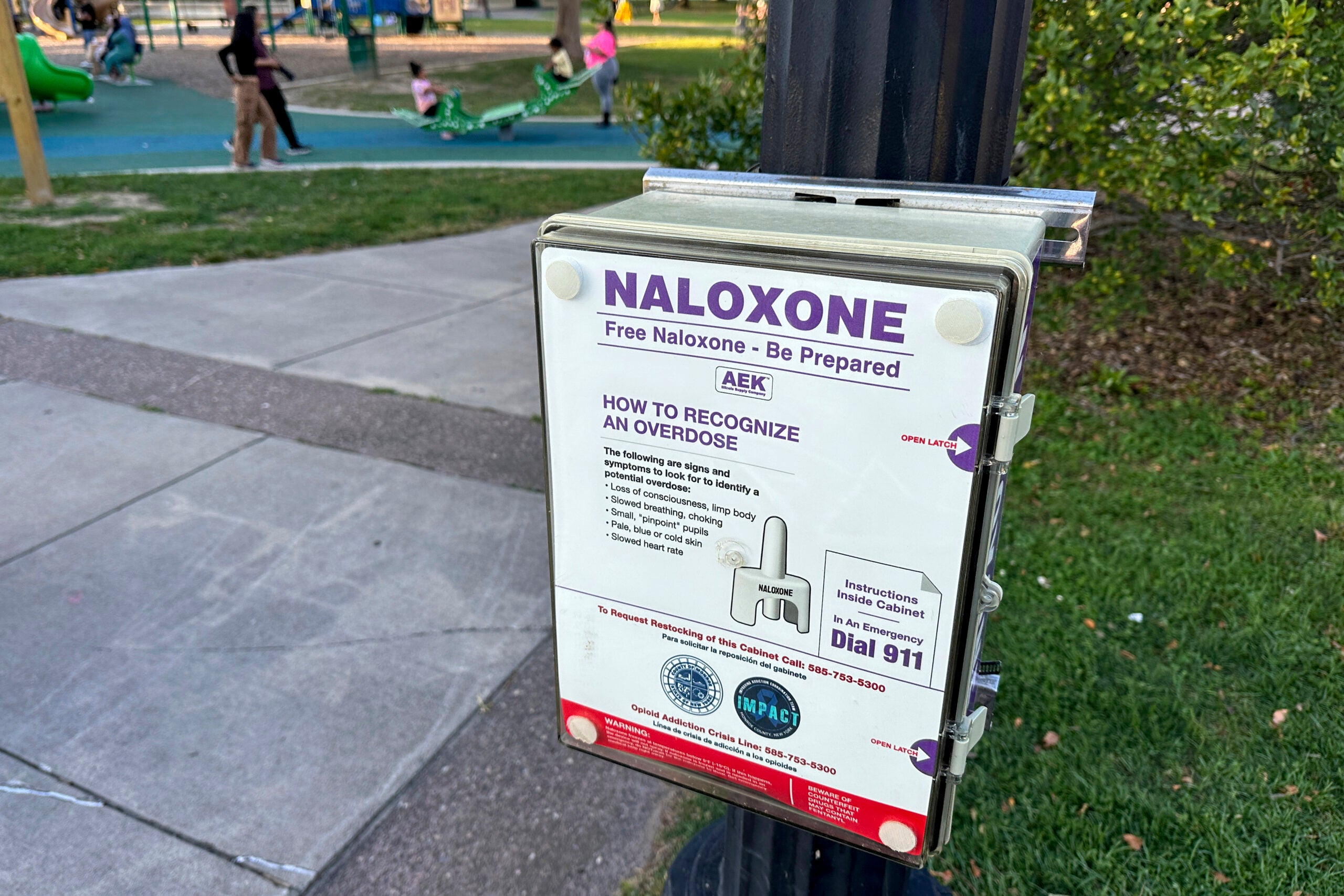While opioids have dominated the conversation around drug use in recent years, methamphetamine use has quietly become a growing concern across Wisconsin.
Last year, about 1 in every 5 drug cases at the Wisconsin State Crime Labs involved meth — more than heroin and fentanyl combined.
And while heroin and fentanyl use have also increased significantly from 2010 to 2018 — from 10 percent to 14 percent and 0.2 percent to 3 percent, respectively — meth has outpaced them both, jumping from 6 percent of reported cases to 20 percent.
News with a little more humanity
WPR’s “Wisconsin Today” newsletter keeps you connected to the state you love without feeling overwhelmed. No paywall. No agenda. No corporate filter.
Wisconsin is well positioned for the illicit drug pipeline — receiving shipments from both Chicago and Minneapolis that leaves virtually no part of the state untouched. Tom Johnson, head of a regional drug task force in western Wisconsin, says law enforcement is feeling it acutely.
“I would say that about 70 percent of law enforcement in the area all agree that meth is the largest and most problematic drug that we see,” Johnson said. “There’s a variety of drugs that are out there and we deal with them off and on, but methamphetamine has simply skyrocketed over the past few years.”
Meth is also a starkly unforgiving drug. It offers a temporary high that gives users a jolt of energy, while slowly shutting down the body. It’s visible marks can leave users with severe tooth decay and skin sores.
But the hardest to treat are the psychological effects, said Dr. Chris Eberlein, an emergency physician at Gundersen Lutheran Health System.
“The biggest one that we see … are the psychological issues that people get with long-term meth use,” he said. “They can become psychotic, hallucinate and cause long term cognitive problems, and those are extremely difficult to treat.”
What is driving the steady increase in the drug? Johnson said a variety of factors are behind the rise.
“It’s economic driven and it’s addiction driven,” he said. “It’s just a massive rewiring in the brain that causes that addiction that drives the need for meth.”
Meth is comparatively cheap to other drugs these days, Johnson said. For decades Wisconsin has seen meth recede, only to make a comeback, but what has made the recent surge more potent is the change in how people access it.
“In the 1990s, one of the biggest things … was the manufacturing of meth was a little more localized, we had a lot of mom and pop garage-type labs,” he said.
Today, the majority of the meth is coming out of “super labs” in Mexico and the West Coast, where it can be manufactured at a much cheaper rate and in larger quantities.
Yet the opioid epidemic is almost certainly part of the resurgence in meth, Eberlein said. Opiates are a depressant, while meth is a very strong stimulant.
“Patients will try to basically negate one or the other, basically chemically try to put themselves back to neutral,” Eberlein said. “So they’re using their opiates, they get tired. Then they use a stimulant and just keep in this vicious cycle.”
Eberlein said in the La Crosse area, they’ve noticed a shift in overdose deaths.
“We’ve just been reviewing some of our local overdose deaths in the La Crosse County and we’ve seen prescription drugs drop dramatically and opiates in general drop, but methamphetamines have either stayed the same or have steadily increased in the toxicology of these overdoses,” he said.
Part of the reason opioids get more attention is their sudden death component, Johnson said, compared to a slower death from meth.
“One of the biggest factors of meth with the heroin and opioids is the fact that it causes such havoc and respiratory failure, death is more immediate than it is in a meth situation,” Johnson said.
Last year, the state Department of Justice made a push to raise awareness about meth and dedicate more resources to drug enforcement.
Johnson said it’s difficult to gauge how effective efforts have been.
“It’s a little cyclical, it’s up and down, but the bottom line is meth just keeps rising,” he said. “Heroin ebbs and flows, and meth just keeps on accelerating. So it’s hard to say that there’s been a big difference, just because it’s so prolific in the area.”
Wisconsin Public Radio, © Copyright 2025, Board of Regents of the University of Wisconsin System and Wisconsin Educational Communications Board.







